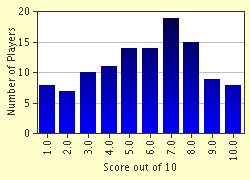Quiz Answer Key and Fun Facts
1. This 'P' term of architecture and sculpture comes from the ancient Greek for a 'brick' or 'squared stone', and refers to the square block that supports a column or a statue. What is this very useful and often bulky item called?
2. Which of these 'P' art movements was created by Charles Edouard Jeanneret (aka Le Corbusier) and Amédée Ozenfant in 1918 to counter what they saw as the contamination of Cubism. What did they call their movement?
3. This 'ism' is occasionally called 'Neo-Impressionism', and was avidly referred to as 'Divisionism' by Georges Seurat. How do art connoisseurs most often refer to this 'P' -ism in the modern day?
4. Which of the following items is associated with the creation of 'plaster of Paris', often used in sculpture?
5. Coming from the Latin for 'to paint', this 'P' art term not only refers to powders that impart color to paints, but also to the substances within animals and plants that provide coloring to the cells, 'melanin' being one example. What is this very useful 'P' term?
6. In ancient times he was called Eros by the Greeks and Cupid by the Romans. When the Renaissance artists began to paint him, a naked and chubby child-like figure, occasionally with wings, by what 'P' word was he termed?
7. Of the 'illuminated books' of the pre-Gutenberg printing days, this 'book of Psalms' was the most important vis-à-vis illustrators...what was it called?
8. This ancient writing material, made from sheep or calf skins, was invented in ancient Pergamum sometime during the 2nd century BC. What was it called?
9. What is the term for a work of art that is an imitation, not a copy, of another artist (or several other artists) style?
10. An association of artists founded in 1901 in Munich, it featured Wassily Kandinsky as its first President in 1902. By what name, hearkening back to ancient times, did this anti-conservative organization go?
Source: Author
thejazzkickazz
This quiz was reviewed by our editing team before going online.
Any errors found in FunTrivia content are routinely corrected through our feedback system.

